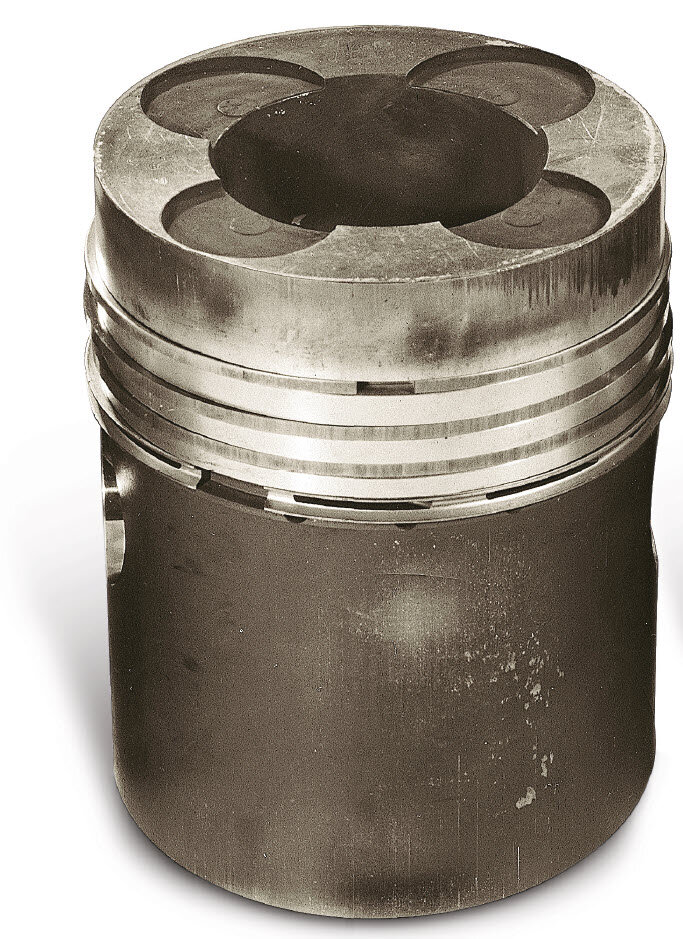Seizure due to lack of lubrication caused by scuffed piston rings
DESCRIPTION OF THE DAMAGE
- Score marks and burned spots on the piston ring sliding surfaces (Fig. 1 and 2).
- Longitudinal scratches on the cylinder bores (not shown).
- In the early stages: initial rubbing marks can be seen on the piston top land (Fig. 3, top right).
- In a more advanced stage: the damaged areas have spread over the entire piston (Fig. 4).




DAMAGE ASSESSMENT
This type of damage primarily occurs during the running-in phase under heavy loads, when the piston rings are not yet run in and hence do not yet provide a full seal (mostly on diesel pistons). The combustion gases streaming past the piston rings heat up the rings and the cylinder wall excessively and cause the oil film to break down.
However, abnormal combustion and increased temperatures or insufficient cooling of the piston and cylinder wall can also affect or even destroy the lubricating film. Initially this causes the piston rings to run dry without lubrication, causing burn spots. The piston also has to slide over the non-lubricated parts of the cylinder, which causes initial rubbing marks on the piston top land and subsequently leads to seizures on the entire piston skirt (Fig. 4).
However, abnormal combustion and increased temperatures or insufficient cooling of the piston and cylinder wall can also affect or even destroy the lubricating film. Initially this causes the piston rings to run dry without lubrication, causing burn spots. The piston also has to slide over the non-lubricated parts of the cylinder, which causes initial rubbing marks on the piston top land and subsequently leads to seizures on the entire piston skirt (Fig. 4).
POSSIBLE CAUSES FOR THE DAMAGE
- Excessive engine loads during the running-in phase.
- The structure of the honed cylinder surface was not perfect for good adhesion of the engine oil (squashing of the graphite veins, peak folding formation, insufficient roughness and/or incorrect honing angle).
- Unsuitable lubricating oil (incorrect grade and viscosity).
- The temperature on the cylinder running surfaces was too high (malfunctions in the cooling system or deposits in the surrounding cooling ducts).
- Abnormal combustion and the resulting increased temperatures during combustion (lean mixture, glow ignition, injection nozzles leaking or dripping after injection).
- Insufficient oil supply to the cylinder running surfaces due to insufficient quantities of splash oil and centrifugal oil from the connecting rod bearings and crankshaft bearings.